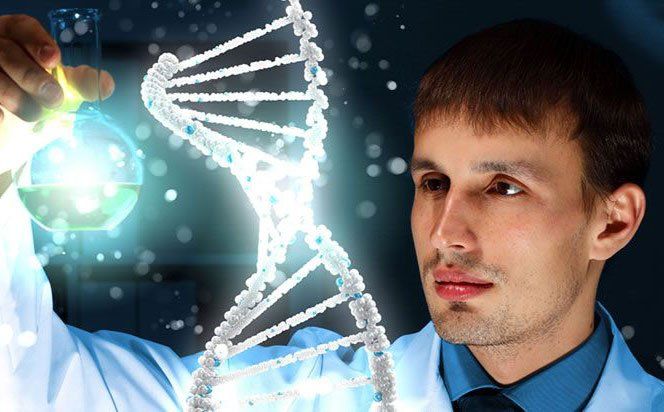MY ACCOUNT
ER
Estrogen Receptor
- Species: Human
- Expression Host: Baculovirus-insect cell
- Tag: His-tag
- Purity: 90%
- Molecular Weight: 67.9 kDa.
- Gene Accession Number: NM_000125.
Purification and Quality Control
ER can be applied in DNA and protein-protein interaction assays. 1 unit is equal to 1 nanogram of purified protein. 20-100 units are sufficient for an in vitro transcription assay and 100 units are sufficient for a protein-protein interaction assay. For research use only.
Formulation and Storage
Protein is stored in 20 mM Tris-Cl (pH 8.0), 20% Glycerol, 100 mM KCl, 1 mM DTT and 0.2 mM EDTA. Avoid freeze thaw cycles.
Synonym
Estrogen receptor, ER, Estradiol receptor, ER-alpha, Nuclear receptor subfamily 3 group A member 1, ER-a, Estrogen Receptor alpha. DKFZp686N23123; ER; Era; ESR; ESRA; NR3A1 and ESR1.
Protein Sequence
MTMTLHTKAS GMALLHQIQG NELEPLNRPQ LKIPLERPLG EVYLDSSKPA VYNYPEGAAY
EFNAAAAANA QVYGQTGLPY GPGSEAAAFG SNGLGGFPPL NSVSPSPLML LHPPPQLSPF
LQPHGQQVPY YLENEPSGYT VREAGPPAFY RPNSDNRRQG GRERLASTND KGSMAMESAK
ETRYCAVCND YASGYHYGVW SCEGCKAFFK RSIQGHNDYM CPATNQCTID KNRRKSCQAC
RLRKCYEVGM MKGGIRKDRR GGRMLKHKRQ RDDGEGRGEV GSAGDMRAAN LWPSPLMIKR
SKKNSLALSL TADQMVSALL DAEPPILYSE YDPTRPFSEA SMMGLLTNLA DRELVHMINW
AKRVPGFVDL TLHDQVHLLE CAWLEILMIG LVWRSMEHPG KLLFAPNLLL DRNQGKCVEG
MVEIFDMLLA TSSRFRMMNL QGEEFVCLKS IILLNSGVYT FLSSTLKSLE EKDHIHRVLD
KITDTLIHLM AKAGLTLQQQ HQRLAQLLLI LSHIRHMSNK GMEHLYSMKC KNVVPLYDLL
LEMLDAHRLH APTSRGGASV EETDQSHLAT AGSTSSHSLQ KYYITGEAEG FPATV
Background
Several members of the nuclear receptor family are directly associated with human malignancies including breast cancer, prostate cancer and leukemia. The pathogenesis of each of these diseases is underpinned by the activities of a member of the superfamily; estrogen receptor-alpha (ER alpha) in breast cancer, androgen receptor (AR) in prostate cancer, and retinoic acid receptor alpha (RAR alpha) in acute promyelocytic leukemia (1). Estrogen receptors (ER) are members of the superfamily of nuclear hormone receptors (2, 3) whose activity is required for the normal function of the female reproductive system. Two isoforms of estrogen receptor (ER α and ER β) have been described. They function as ligand-dependent transcriptional activators (4). The biological functions downstream of ER result from altered expression of direct transcriptional targets as well as secondary effects mediated by biological activities of direct targets. In the mammary gland, estrogen receptors regulate normal epithelial cell development and differentiation through their well-documented effects on transcription (5, 6). Estrogens have long been known to have mitogenic functions in breast cancer cell lines and in breast tumors (7). Selective estrogen receptor modulatory compounds (SERMs), which bind directly to ER, can block the growth stimulatory function of estrogens (8).
SDS-PAGE stain with Coomassie Blue

References
1. Hart S.M. (2002) Biol. Res. 35, 295-30032. Mangelsdorf et al., (1998) Cell 83, 835-839
3. Tsai and O`Malley, (1994) Annu. Rev. Biochem. 63, 451-486
4. McDonnell and Norris, (2002) Science 296, 1642-1644
5. Nilsson et al., (2001) Physiol. Rev. 81, 1535-1565
6. Couse and Korach, (1999) Endocr. Rev. 20, 358-417
7. Gruber et al., (2002) N. Engl. J. Med. 346, 340-352
8. McDonnell et al., (2002) Am. J. Cardiol. 90, 35F-43F
DISCLAIMER
This products is recommended For RESEARCH USE ONLY and is Not qualified for Use in Diagnostic or Therapeutic Procedures.




